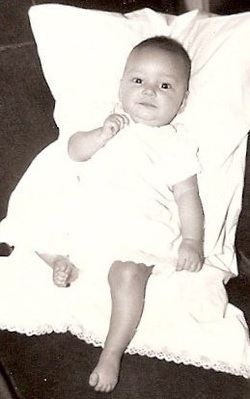COMBING & CURLING
When your mother combs your hair,
Here's a rhyme for you to say:
If you try it, I declare,
It will take the snarls away!
In the ocean of my hair,
Many little waves are there;
Make the comb, a little boat,
Over all the billows float;
Sail the rough and tangled tide
Till it's smooth on every side,
Till, like other little girls,
I've a sea of wavy curls!
Gelett Burgess. Goops and How to Be Them.
 My real hair.
My real hair. 





